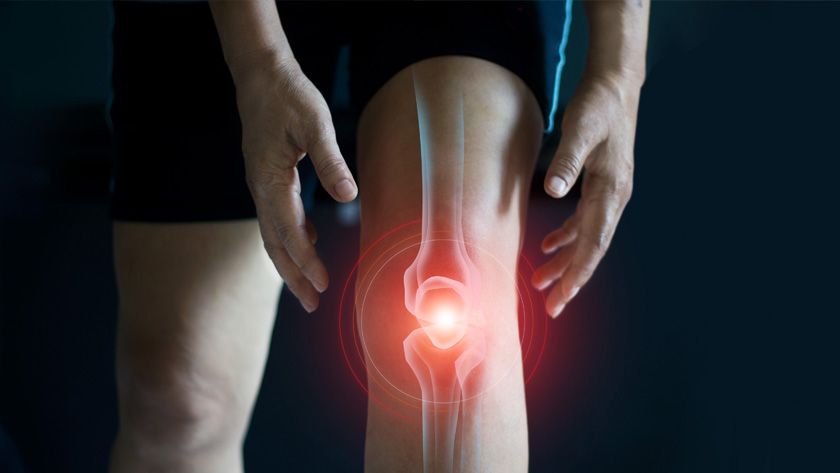
Dr. Sowmya Viswanathan, a Scientist at the Schroeder Arthritis Institute, recently led the development of an experimental model of late-stage osteoarthritis that enables scientists to rapidly test potential therapies in the lab.
Osteoarthritis occurs when the cartilage in joints wears away, causing pain and reduced flexibility. Its progression is caused by many factors, including inflammation in the synovium, a tissue that lubricates and protects the joint.
“Existing models fail to capture key features of this disease because it is difficult to replicate the conditions of the tissue outside the body,” says Mable Chan, a PhD candidate in Dr. Viswanathan’s group who co-led the study. “We need to devise better tools to test potential therapies: experimental models that replicate how the disease affects the cartilage and synovial tissues at the molecular level.”
The research team developed a strategy to preserve cartilage and synovial tissues that were donated by patients who underwent knee-replacement surgery for late-stage osteoarthritis. They kept the tissues alive for up to a week and conducted sensitive chemical analyses to regularly monitor how the tissues changed over time.
By examining changes in immune cells, genes, proteins and chemicals in the tissues, the team created a more detailed picture of how joints are affected by osteoarthritis. Using this approach, the researchers were also able to monitor the differences in how the disease progressed between patients.
“This analysis enabled us to monitor changes in tissue degradation and inflammation,” explained Dr. Viswanathan. “Within two days, we were able to characterize the changes that continue to occur in cartilage and synovium that are undergoing late-stage osteoarthritis.”
The team also tested how the tissues are affected by dexamethasone—a steroid that is commonly used to reduce pain in osteoarthritis. They found that the drug reduced the expression of genes associated with inflammation, which is consistent with how dexamethasone provides relief to damaged joints.
“One limitation of our experimental model is that it does not yet support the testing of therapies over long periods of time, due to challenges associated with keeping donated tissues alive,” cautions Dr. Viswanathan. “Even so, it is an effective tool for screening new drugs, with the potential to accelerate the development of effective therapies.”
There is currently no cure for osteoarthritis and existing joint damage cannot be reversed. The best way to prevent the disease is to stay active and maintain a healthy weight to avoid placing excess stress on joints.
This work was supported by the Arthritis Society, the Schroeder Arthritis Institute and the UHN Foundation. Mable Chan is funded by the Barbara and Frank Milligan Graduate Fellowship from the University of Toronto, Mount Sinai Hospital Graduate Scholarship in Science and Technology and an Ontario Graduate Scholarship from the Government of Ontario.
Chan MWY, Gomez-Aristizábal A, Mahomed N, Gandhi R, Viswanathan S. A tool for evaluating novel osteoarthritis therapies using multivariate analyses of human cartilage-synovium explant co-culture. Osteoarthritis Cartilage. 2021 Sep 20. doi: 10.1016/j.joca.2021.09.007.

Dr. Sowmya Viswanathan (L) is a Scientist at the Schroeder Arthritis Institute and the senior author of the study; Mable Chan (R) is a PhD candidate in Dr. Viswanathan’s lab and the first author of the study.

